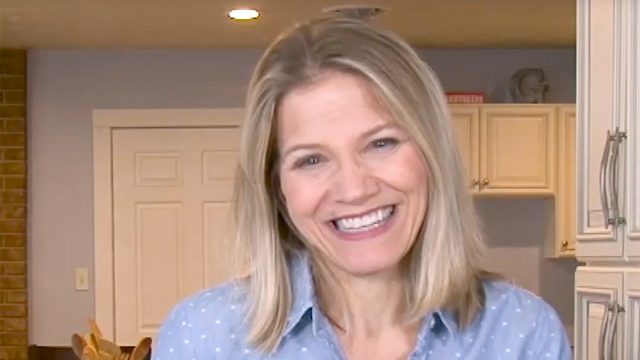7 Tips for Losing Weight After Age 50
Are you over 50 and struggling to lose weight? Dr. Becky Gillaspy works full-time, helping people reach their health and weight loss goals through her website and two YouTube channels: Dr Becky Fitness and 2 Fit Docs. "In this video, I walk you through fat loss strategies that work after 50," she says at the start of the clip. Here are seven tips on how to do it.
She Is a Proponent of Low Carb/High Fat Dieting
"If you've followed my channel, you know that I am a proponent of low-carb/high-fat dieting," she writes in the caption. She maintains that it "is certainly an effective strategy for weight loss."
But Over 50 You Have to Also Consider Gut Health
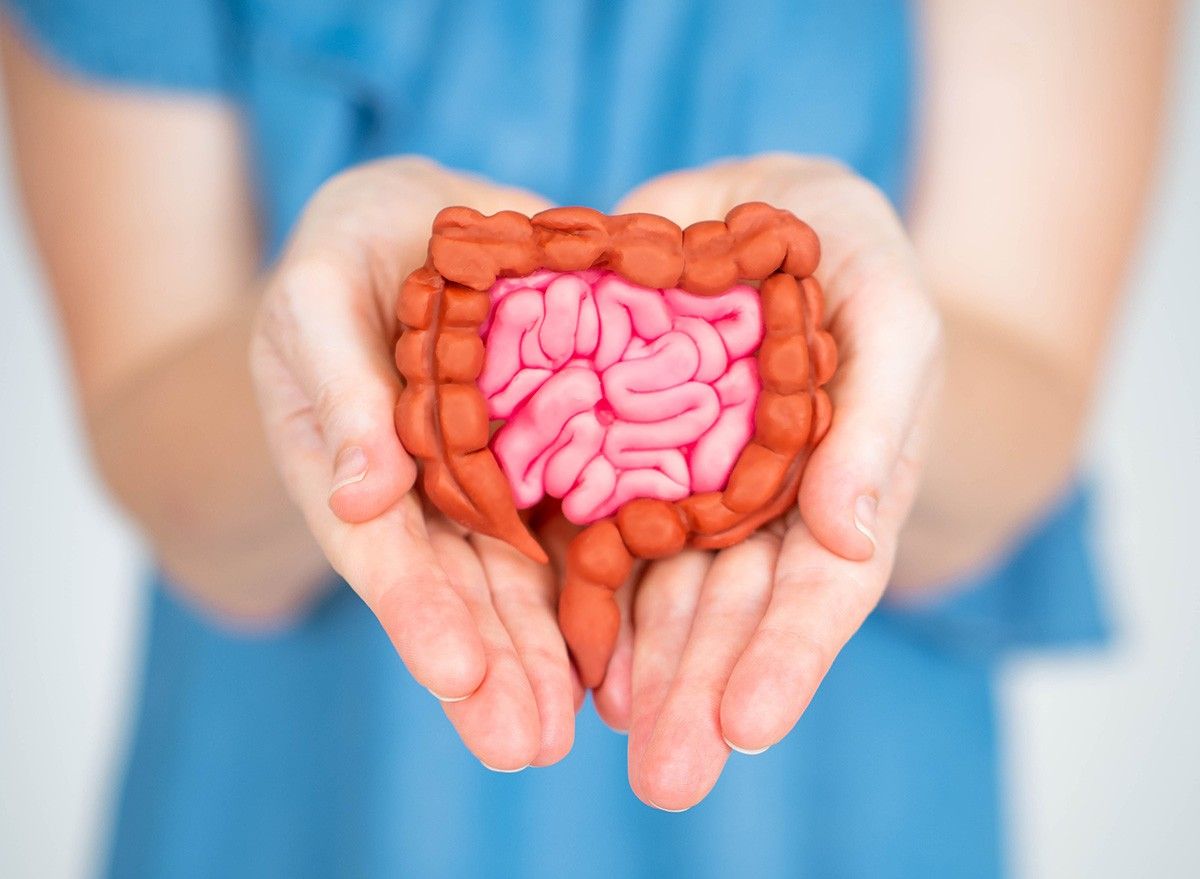
"But when we are over the age of 50, we need to look at this diet strategy with a bit of a twist so that we make sure we are keeping our carb intake low enough to bypass insulin resistance AND that we are eating in a way that feeds our good gut bacteria," she continues. "This can be a tricky combination because these two things can conflict with each other."
Also, Consider Insulin Resistance
"In part one, we identified insulin resistance and poor gut health as two metabolic disadvantages that you can influence through your diet. If you've been following my channel, you know I'm a proponent of low carb, high-fat dieting, and that is certainly an effective strategy for weight loss," she continues in the clip.
It's a "Tricky Combination"
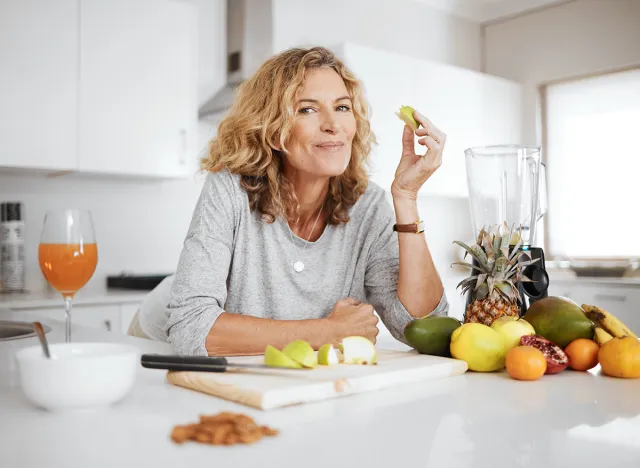
"But when we are over the age of 50, we need to look at this diet strategy with a bit of a twist so that we make sure we are keeping our carbohydrates low enough to bypass insulin resistance and that we are eating in a way that feeds our good gut bacteria. And this can be a tricky combination because these two things can conflict with each other. And here are the challenges," she says.
One Challenge Is High Fiber Foods Contain Carbs
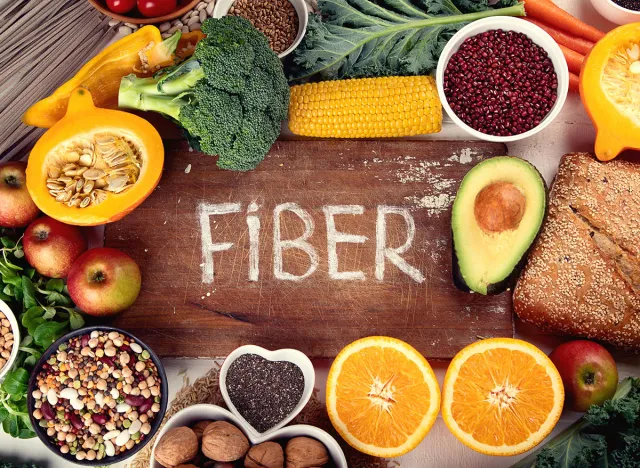
"First, high-fiber foods feed your good gut bacteria, but fiber is only found in plant foods, and all plant foods contain carbs. So we find ourselves walking a fine line between eating low carb enough to lose weight and eating enough fiber to promote gut health," she says.
RELATED: I Got Into the Best Shape of My Life at 50 by Following These 6 "Basics"
Another Challenge Is That Gut Damaging Ingredients Are in Most Food
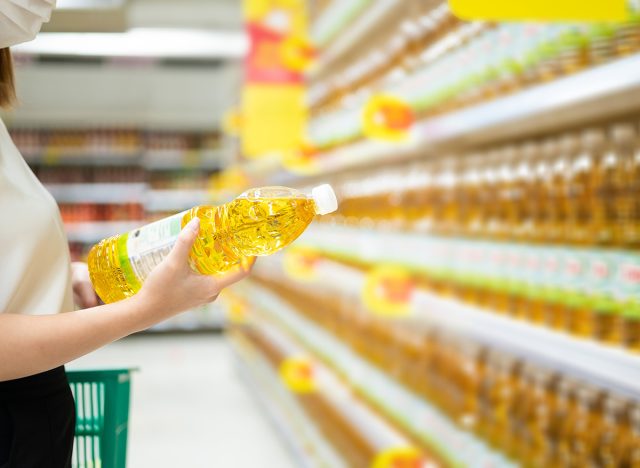
"Challenge number two is that gut-damaging vegetable oils are found on the ingredient list of most foods," she says. "So as we age, we do best when we take our low carb high-fat diet to a new level, and we focus on what we'll call a smart carb right fat diet. So let's look at what that means."
What Is a Smart Carb Right Fat Diet? First, Determine the Carb Intake Right for Your Body
"First of all, find the carbohydrate intake that is right for your body," she says. "You've likely heard of a ketogenic diet, and that is certainly a very effective diet, but keto limits the number of high-fiber foods you can eat. It can also be intimidating to go from a high-carb diet where you might be eating 250 carbs a day and reduce that intake to less than 50 grams, which is where you need to be in the keto range. And now I have found that some people need to push their carbs this low, but not everyone, you know, every person's metabolism is different," she says.
Start with 100 Grams of Carbs a Day and Work Down
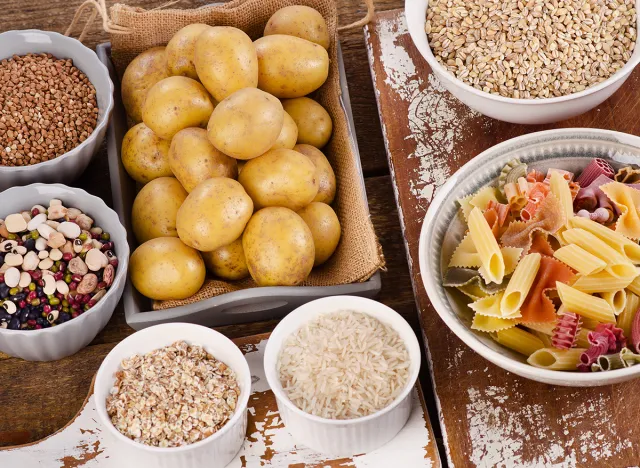
"I feel that it is best for most people to start with a low-carb diet," she continues. "Perhaps bring your carbs under a hundred grams per day and then work down until you find the level that works for you."
Two, Focus on Foods with the Best Fiber to Carb Ratio

"The second way to make this smart carb right fat diet work for you is to focus on foods with the best fiber-to-carb ratio," she continues. "These include non-starchy vegetables, nuts, seeds, and avocados," she says. "I should also add that beans have a favorable fiber-to-carb ratio, but not everyone tolerates them."
Next, Focus on Whole Carbs
"Next, focus on whole carbs. You want that carb that you're eating to still look somewhat like the plant that it came from. There are many refined foods that add back fiber to increase the fiber-to-carb ratio. Cereal and meal replacement bars are classic examples, and while fortifying fiber in this way might be helpful, in my opinion, these processed foods are never going to match up to the original food," she says.
Include Fermented Foods
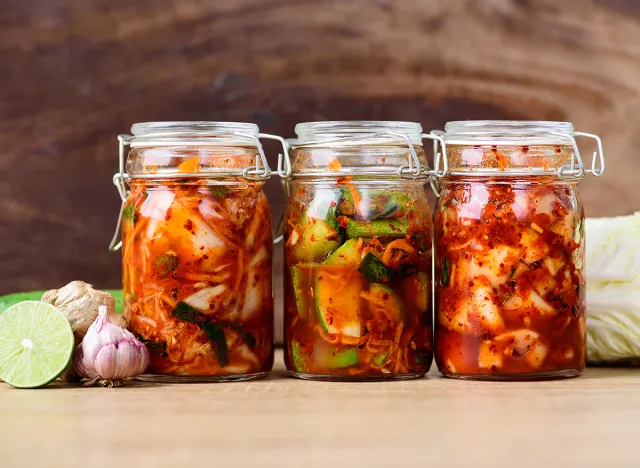
"To improve gut health, you can include fermented foods in your diet," she says. "In our home, we like to cook sauerkraut on a regular basis. You can also use things that are fermented, like kimchi and kombucha."
RELATED: I'm 50+ and These 7 Fat-Blasting Habits Keep Me in the Best Shape of My Life
Focus on Whole Fats
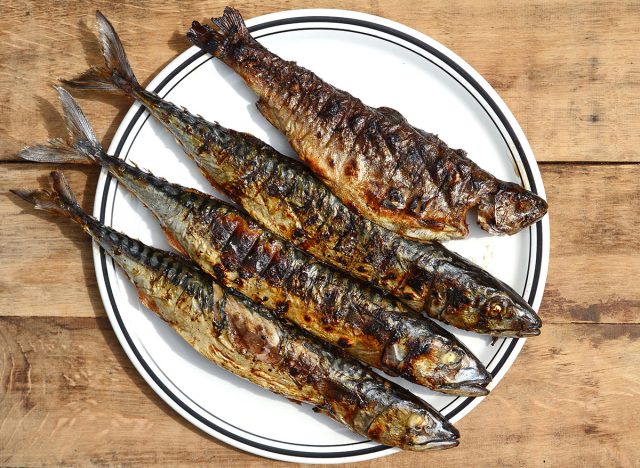
"As for fats, you'll do best when you focus on whole fats like raw nuts and seeds, avocados, fish, eggs, and high-quality meats," she says. "When you have better oils, such as high-quality olive oil, avocado oil, and coconut oil,"
Read Labels
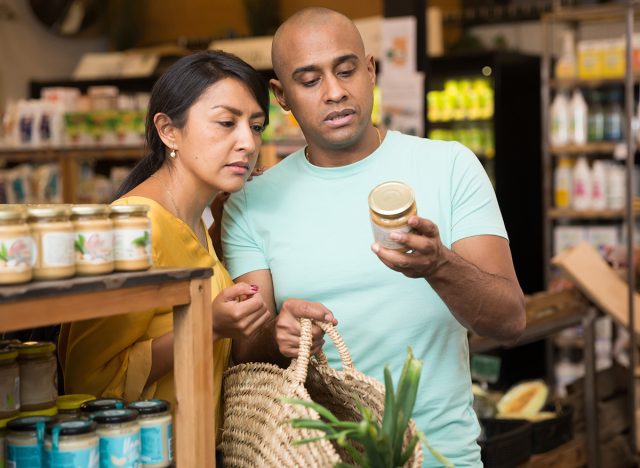
"And lastly, when you avoid vegetable oils," she says. "So start reading labels, and you'll be surprised at how many products have vegetable oil or soybean oil listed in them, things that you wouldn't really expect, like peanut butter, salad dressings, and mayonnaise. These things often have soybean or vegetable oils included on their ingredient list."
These 7 Steps Will Keep Your Insulin Low and Gut Bacteria Thrive
"When these seven steps are incorporated into your daily diet, your insulin stays low, your gut bacteria thrive, and you get results on the scale. Yet I find that these steps often make sense on an intellectual basis, but it's quite another thing to execute these changes in real life," she says.
RELATED: Top 8 Gut-Healing Foods I Eat Every Day for Losing Weight
So, Order the Fatty Meat

Bottom line? "We find ourselves out to eat and faced with a menu, and it seems so wrong to order a fatty piece of meat. So we ended up ordering the bland chicken with a side of broccoli because it's the safe choice, right? But then, of course, we leave the restaurant feeling unsatisfied and craving a dessert." And if you enjoyed this article, take advantage of these 20 Superfoods for People Over 50.
